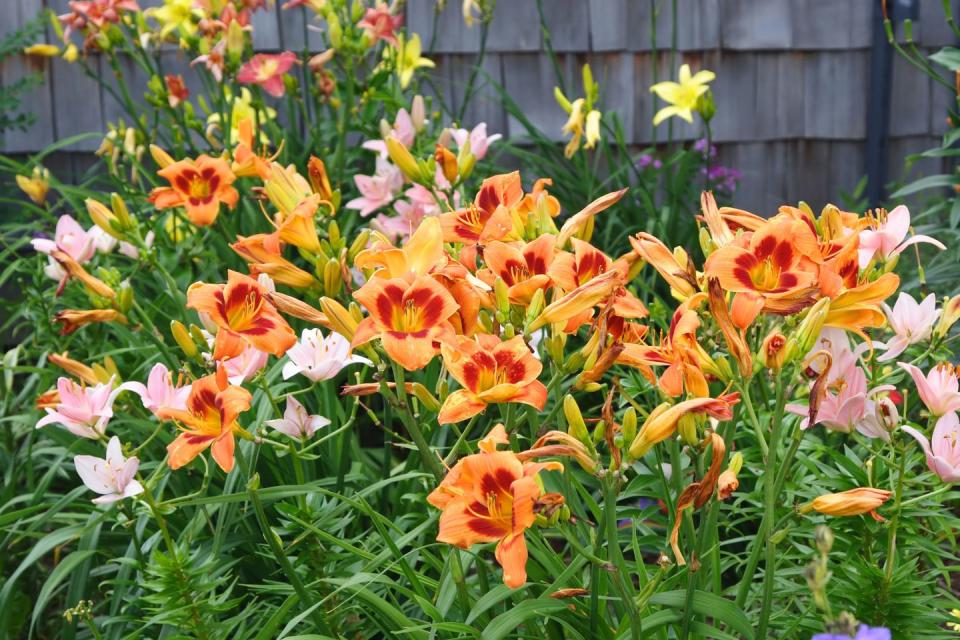Here's How to Grow Daylilies So They Bloom Beautifully
If you feel like your thumb isn't the greenest, try daylilies in your garden! They're about as close as you can get to a carefree flower that require almost zero care as Ree Drummond herself can attest to, growing daylilies in the Oklahoma heat and humidity: "Daylilies are tall and stalky and beautiful." These hardy perennials come back for many years, and they adapt to a wide variety of soil types and climates. They grow in USDA Hardiness zones 3 to 9, so most of the country can grow these beautiful flowers.
Daylilies grow a foot to several feet tall, and although their flowers only live for one day (thus, the name!), they have many on each stem. Many varieties bloom for weeks, with peak season in July to August. Thousands of cultivars, or cultivated varieties, have been developed over the years. Newer types have double, frilly, or long strappy petals, and many also are fragrant. They multiply rapidly, so in a few years, you'll have plenty to divide and plant elsewhere in your garden or swap with another gardener.
Here's what else you should know about how to grow daylilies:

When should I plant daylilies?
It's best to plant daylilies in spring or fall when the temperatures are more moderate and rainfall generally is more plentiful. You can plant these flowers in the summer, too, as long as you keep them watered. Once established, daylilies are fairly drought-tolerant, which is another great reason to plant them.
How do I care for daylilies?
Daylilies need full sun, which is six or more hours of direct sunlight per day. They can handle a tiny bit of shade, but won't bloom as well. Dig a hole a little larger than the pot size, and place the plants in the hole at the same depth as they were in the container. Water well the first few weeks as they get established.
You don't need to fertilize, but it's fine if you would like to give them an extra boost. Use a general-purpose granular type in spring. It's also okay to snap off the dead flowers as they fade, but it's not completely necessary—it just neatens things up a bit. After they stop blooming, you can snip off the dead stems, which are called "scapes," if you don't like the look of them. Or leave everything to clean up in the fall after a frost or next spring.
One word of warning, however: Deer love to eat daylilies and will strip the buds clean. If you have frequent visitors from the deer population in your neighborhood, it's better to avoid planting these lovely perennials and opt for deer-resistant plants instead. (Otherwise, be willing to share with them.)
How do I divide daylilies?
In a few years when you see the flowering power starting to wind down, your plants likely need divided. It's not complicated, and you'll yield many new plants for free! Use a spade from your gardening tools to take a chunk off the edge of the plant, then replant elsewhere in your garden. Make sure to water well until the plants get established.

